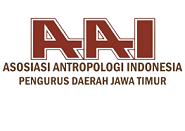The stereotypical representation of women in the classic fairy tales Snow White, Cinderella, and Sleeping Beauty
Downloads
Baker-Sperry L & Grauerholz L (2003) The pervasiveness and persistence of the feminine beauty ideal in children's fairytales. Gender and Society 17 (5):711–726.
Black P & Sharma U (2001) Men are real, women are "made up”: Beauty therapy and the construction of femininity. The Sociological Review 49 (1):100–116. DOI 10.1111/1467-954X. 00246.
Cheu J (2013) Diversity in Disney Films: Critical Essays on Race, Ethnicity, Gender, Sexuality and Disability. North Carolina: McFarland & Company, Inc.
Dam LR (2014) Fairy Tale Femininities : A Discourse Analysis of Snow White Films 1916-2012. Thesis, University of Wellington.
Eriyanto (2001) Analisis Wacana : Pengantar Analisis Teks Media. Yogyakarta: LKis.
Fadlia F (2018) Fairy tales sebagai mekanisme budaya untuk menanamkan dan membentuk peran gender yang salah pada anak. AL-IJTIMA'I-International Journal of Government and Social Science 3 (2):181–196.
Filimon EC (2012) Cinderella's ashes - new women, old fairytales. Romanian Journal of English Studies 9 (1):131–137.
Garabedian J (2014) Animating gender roles: How Disney is redefinig the modern princess. James Madison Undergraduate Research Journal 21 (2):22–25.
Griffin M & Clarke LH (2007) The body natural and the body unnatural: Beauty work and aging. Journal of Aging Studies 21 (3):187–201.
Henke JB, Umble DZ, & Smith NJ (1996) Construction of the female self: feminist readings of the Disney heroine. Women's Studies in Communication 19 (2):229–249.
Hynes A (2010) Raising princesses? Gender socialisation in early childhood and the Disney princess franchise. Critical social thinking: policy and practice 2:205-216.
Inge MT (2004) Art, adaptation, and ideology: Walt Disney's snow white. Journal of popular film and television 32 (3):132–142.
Joshi A (2017) Changing world with Disney. The criterion: an International Journal in English 8 (2):976–8165.
Kuon T & Weimar H (2009) Wake up sleeping beauty: strong heroines for today's world. Advancing Women in Leadership 29 (4):1–8.
Lieberman MR (1972) "Some day my prince will come”: female acculturation through the fairy tale. College English 34 (3):383-395.
Louie P (2012) Not so happily ever after? The Grimm truth about gender representations in fairy tales. Ignite: Undergraduate Journal for Gender, Race, Sexuality and Social Justice 4 (1):74–82.
Maity NP (2014) Damsels in distress : a textual analysis of gender roles in Disney princess films. IOSR Journal of Humanities and Social Science 19 (10):28–31.
Mufid M (2012) Etika dan Filsafat Komunikasi. Jakarta: Kencana.
Mutmainna M (2015) Re-thinking fairytales : happily "never” after ?. International Journal of Humanities and Social Science Invention 4 (8):49–54.
Nelson A (2006) Gender in Canada. Toronto: Pearson Education Canada Inc.
Parks K (2012) Mirror, Mirror : A Look at Self-Esteem & Disney Princesses. Honors Thesis, Ball State University, Indiana.
Propp V (1968) Morphology of Folktales. Austin and London: University of Texas Press.
Rowe K (1999) To Spin a Yarn: The Female Voice in Folklore and Fairytale. New York: W.W. Norton & Company.
Sawyer N (2013) Feminist outlooks at Disney princess‘s. James Madison University.
Shamna R (2018) Framing femininity in fairy tales : the female stereotypes in Cinderella and the Sleeping Beauty in the wood. Epitome: International Journal of Multidisciplinary Research 4 (6):39–48.
Skeggs B (1997) Formations of Class and Gender: Becoming Respectable. America: SAGE Publication Ltd.
Suciu G (2015) A comparative analysis of fairy tales heroes and heroines through gender lens. In: The Proceedings of the "European Integration – Between Tradition and Modernity” Congress 6, 22-23 October 2015, Tí¢rgu MureÈ™. Tí¢rgu MureÈ™: Editura Universităţii „Petru Maior” 310-317.
Trousdale AM & McMillan S (2003) "Cinderella was a wuss” A young girl's response to feminist and patriarchal folktales. Children's Literature in Education 34 (1):1–28.
Ussher MJ (1997) Fantasies of Feminity: Reframing the Boundaries of Sex. New Jersey: Rutgers University Press.
Zipes JD (1983) Fairytales and the Art of Subversion: The Classical Genre for Children and the Process of Civilization. London: Heinemann.
1. The authors agree to transfer the transfer copyright of the article to the Indonesian Journal of Social Sciences effective if and when the paper is accepted for publication. The authors can download the Copyright Transfer Agreement here.
2. The legal formal aspect of journal publication accessibility refers to Creative Commons Attribution-NonCommercial-ShareAlike 4.0 International License (CC BY-NC-SA).
3. Every publication (printed/electronic) is open access for educational purposes, research, and library. Other than the aims mentioned above, the editorial board is not responsible for copyright violation.

IJSS by Unair is licensed under a Creative Commons Attribution-NonCommercial-ShareAlike 4.0 International License.




















